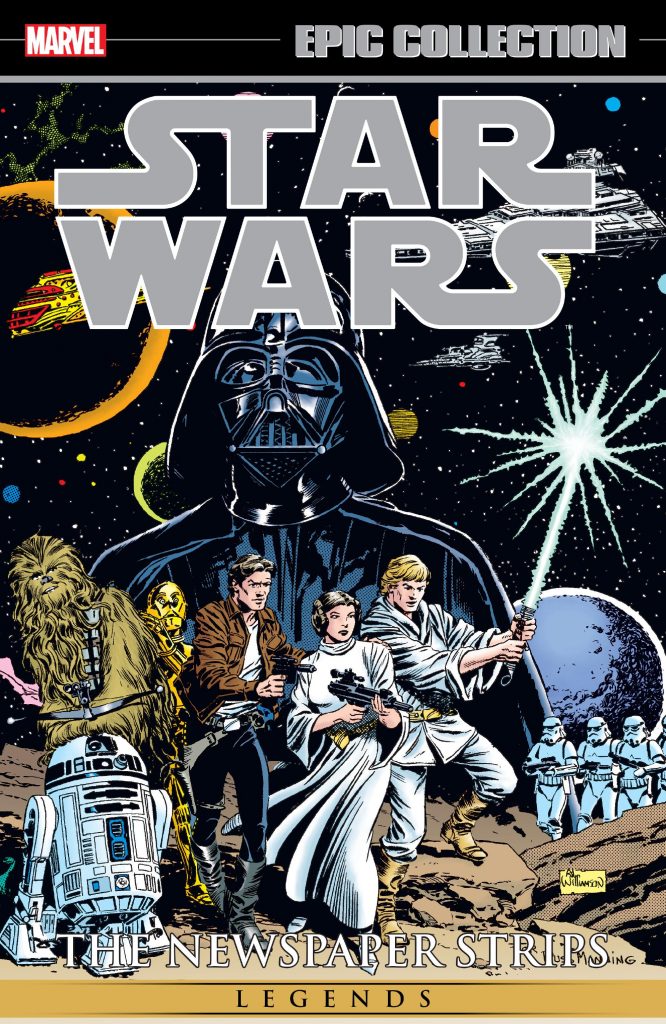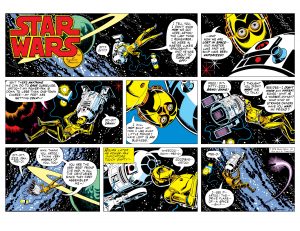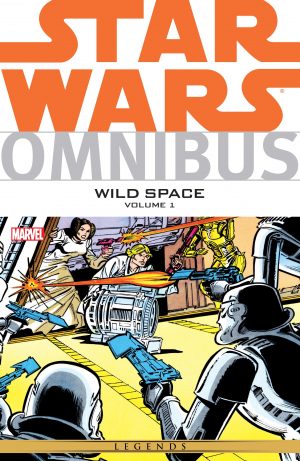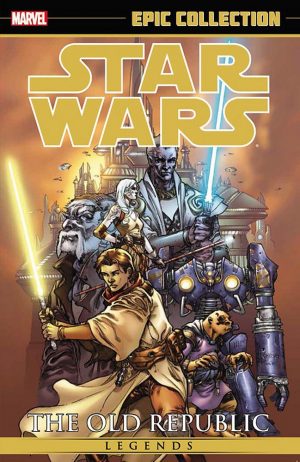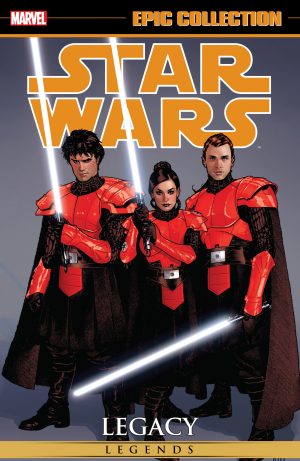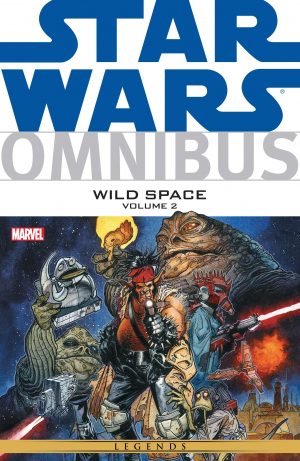Review by Frank Plowright
The Star Wars newspaper strip first appeared in 1979, running for six years and featuring the spectacular art of Russ Manning and Al Williamson, both of whose work had influenced the young George Lucas. There are differing thoughts on the best method of presentation. Purists prefer the strips as originally published, complete with title panels and recaps, but when Dark Horse republished the strips in the 1990s they considered a better experience would be provided by reformatting the strips to read as if prepared for comics. With the exceptions noted below, it’s this version supplied in the Epic Collections, while IDW have now issued Star Wars: Classic Newspaper Comics faithful to the original newspaper publication.
The exception is a twenty five page sequence of Sunday strips by Manning never reprinted by Dark Horse, and here presented in landscape format, requiring turning the book 90 degrees to read them. Long a veteran of Tarzan newspaper strips, Manning poured the love and detail into the Sunday pages, which ran a separate continuity from his work on the daily strip, and while his Han Solo is sometimes awkward, the remainder still looks very stylish. Manning makes good use of the available space, and supplies two stories linked by the framing device of C-3P0 relating adventures to a central computer. Manning has a very distinct design sense, and both in the Sunday and daily strips the futuristic costumes worm by women and the sometimes deliberately clunky droids, echo his work on Magnus, Robot Fighter.
Manning’s daily strips aren’t as engaging. All strips reprinted here were devised before The Empire Strikes Back and its revelations, but even allowing for some aspects contradicting later canon, the work of Manning’s writing lacks sophistication, giving the impression the strips are aimed at a young audience. Manning’s not the best at capturing the distinctive voices of the Star Wars mainstays, and the writers he later collaborated with often have to resort to expository dialogue.
This isn’t apparent in the later strips, all written by Archie Goodwin, although he also wrote for Manning under the alias Russ Helm, still being contracted to produce the Secret Agent Corrigan strip at the time. After Manning, Goodwin works with Alfredo Alcala, first on another set of strips not previously reprinted. Neither these nor the following adaptation of Brian Daley’s novel Han Solo at Stars’ End show Alcala at his best. He doesn’t apply much imagination, and Daley’s plot of Han’s pre Star Wars smuggling career is one long shaggy dog story, each mission leading to another before anything can be resolved.
After Manning’s Sunday pages it’s only the final eighty pages that really shine. Goodwin’s now worked his way into Star Wars, and Williamson throws himself in with gusto. There are the lush science fiction landscapes that made his name in the 1950s, but he’s equally at home with the spaceship technology and cast likenesses. Goodwin’s plots are varied, thrilling and true to the characters, generating tension despite the audience knowing Han, Leia and Luke will survive. There are more to come in volume two.
Manning’s Sunday strip pages are a real inducement. Otherwise the temptation might be to suggest searching out a second hand copy of Classic Star Wars: In Deadly Pursuit and forgetting about The Early Adventures and Han Solo at Stars’ End.
